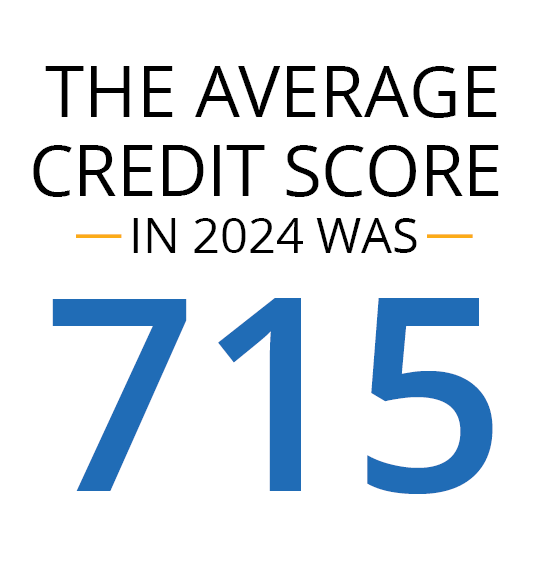 |
What’s in a number? A credit score is a three-digit number used by lenders to evaluate your ability to repay debt on time. It’s not the same as a credit report—that’s a list of your credit accounts and activity, which is used to calculate your credit score. |
 |
Your age, income, and employment status don’t count toward your score, and as of 2025, neither does medical debt.1 Lenders may consider personal information such as salary and employment history when evaluating a loan application, but these aren’t factored into your actual credit score. |
 |
Higher is better. You may have multiple credit scores because there are several companies that provide them, but generally, the higher your score, the less risky a lender considers you. Scores from FICO, one of the most well-known providers, tend to be the most common and range from 300 to 8502 (see below). |
 |
Always pay on time. Few things worry lenders more than unreliable repayments. That’s why your payment history—whether you’ve paid on time or are prone to making late payments—is the biggest component of your credit score (35% of it according to FICO). |
 |
Leave yourself some wiggle room. The second-largest part of your credit score (30%) is how much you owe. Using too much of your available credit limit can make lenders nervous. Keeping usage low and consistent (below 30% of your credit limit, if possible) and paying off large purchases can benefit your score. |
 |
Give it some time. Credit history is the third-largest component of your credit score (15%). This includes the age of your accounts and how long it’s been since you used some accounts. However, you can still have a high score even if you’re relatively new to using credit, assuming you use credit regularly and make payments on time. |
 |
There’s such a thing as too new. Opening too many new accounts in a short amount of time can raise a red flag (10% of your score). Shopping around for the best rate on a single loan generally doesn’t cause concern. In such a case, all the activity in a short time is ultimately considered one event once you take out the loan. |
 |
Variety is the spice of life. For the final 10% of your score, lenders like to see that you can responsibly manage a mix of different credit types, such as revolving (credit cards), retail accounts, and installment loans (mortgages, car loans, etc.). You don’t need one of each, but having accounts in several categories helps boost your score. |
 |
Checking your own score doesn't lower it. This common myth simply isn’t true. You can request your credit score directly from credit bureaus (Experian, TransUnion, and Equifax), but you’ll likely have to pay for it. You can check it for free through services such as Credit Karma or money-management apps, and many bank and credit-card companies offer free credit scores as a perk for their customers. |
 |
If you need help, don’t be afraid to ask. Having too much debt can lower your credit score, which can prevent you from getting the best interest rates and ultimately cost you more money in the long term. A financial professional can help you build a strategy to pay off your debt and improve your credit score over time. |
What Makes a Credit Score Good or Bad?
FICO Credit Score Ranges and Corresponding Categories
| Credit Score | Rating | Impact on Financial Life |
|---|---|---|
| 800-850 | Exceptional | Applicants with scores in this range receive the best rates from lenders |
| 740-799 | Very Good | Scores in this range mean you’re considered dependable and are likely to receive better-than-average rates from lenders |
| 670-739 | Good | This range is near the national average and is generally considered a good score |
| 580-669 | Fair | Scores in this range are considered to be subprime borrowers |
| <579 | Poor | Scores below 579 may result in applicants needing to pay additional fees or deposits, or even being denied credit at all |

Data sources: Experian and Hartford Funds, as of 11/25.
If you have questions about your credit score or want to improve your current score, talk to your financial professional.
1 Consumer Financial Protection Bureau
2 Source: myfico.com, 11/25
This material is provided for educational purposes only.





